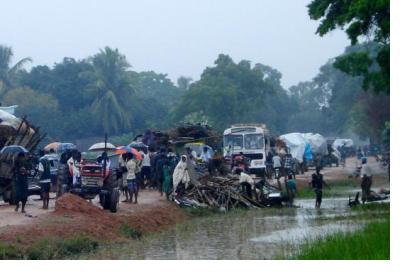New Mobile Weather Stations, designed by scientists at the Sri Lanka-based International Water Management Institute, capture and transmit near real-time data on rainfall, helping raise the alarm when rains reach a certain level of intensity. The new Mobile Weather Stations are equipped with an atomic clock to give precise time and date readings, and a GPS sensor, which updates automatically if they are moved. A system is also being developed for connecting them to Sri Lanka’s mobile phone network to transfer the data.
Sri Lanka regularly experiences variations in weather – especially rainfall – over short distances. This makes it very difficult to accurately predict natural hazards like floods and landslides. To do so, one would have to significantly increase the number of weather stations, which would be very expensive (around USD$10,00 per station).
With the new Mobile Weather Stations this improvement could be achieved at much lower cost. Those stations concentrate on measuring only the most crucial data to avoid natural hazards - the amount of rainfall. Therefore, and because they are made primarily from locally sourced materials, they cost only around USD$250.
Eventually, there could be hundreds of weather stations set up around the country, sending information into a central database. In the event of heavy rains, automated SMS alerts could be sent to people living in areas at risk of floods and landslides.
IWMI in Sri Lanka has recently become UN-SPIDER's 17th Regional Support Office.

